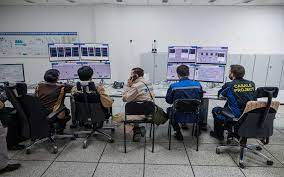How the 401(k) Works and Why You Need It

A 401(k) is one of Americans’ most popular retirement vehicles. If you work for an employer who offers it, you should at least contribute enough to get the full company match; otherwise, you’re leaving free money on the table.
You’re always fully vested in your contributions to a 401(k), but your employer matches may vest according to a schedule (usually over several years). You’ll owe taxes and a penalty if you leave before the vesting period is complete.
Tax-Deferred Savings
What is a 401(k) retirement plan? The 401(k) and its nonprofit counterpart, the 403(b), let you save money for retirement pretax, which sets them apart from most other financial instruments. It lowers your taxable amount and perhaps your tax rate because the money is deducted from your paycheck before taxes. What’s more, the investments you make in your 401(k) or the dividends, interest, and capital gains you earn in those investments are tax-free in retirement as long as you don’t withdraw the funds before age 59 1/2.
A 401(k) also boosts your contribution when you receive a raise or a bonus. This way, you can take advantage of the power of compound interest and increase your savings even further.
Before the 401(k), some employers offered cash or deferred arrangement plans, known as CODAs, to their employees. These arrangements allowed workers to forgo a portion of their wages in exchange for company stock or cash. Then, in 1974, Congress banned new CODAs and replaced them with the 401(k) plan. The 401(k) is an excellent tool for all kinds of workers. It was designed to encourage low- and moderate-income Americans to save for retirement by giving them a tax break on their contributions. There are no other options for the self-employed, such as the solo 401(k), but the 401(k) remains one of the best ways to save for retirement on a tax-deferred basis.
Employer Matching
Employer matching is a vital feature of the 401(k). By offering a match on employee contributions, the company shows its employees that it is willing to invest in their financial well-being. It is a great way to improve employee retention, which helps companies keep top talent and remain competitive in the job market.
The match is usually given as a percentage of the employee’s contribution. The most common is 50%, but some employers only offer a more negligible contribution. However, any match is better than none at all.
A company can also choose how long the employee must work to be fully vested in its match, known as the vesting schedule. For example, some employers use cliff vesting, meaning they forfeit any unvested amount if an employee leaves before the employer match is 100% vested. Other employers use a graded vesting method, meaning that a portion of the match becomes available after a certain period, and the amount grows yearly.
Whatever vesting schedule a company uses, the company must track changes in employee deferral rates to ensure that the correct amounts are automatically routed to the 401(k) accounts. It can be accomplished by integrating payroll and retirement plan management into one system.
Tax-Free Withdrawals
A vital benefit of a 401(k) is the ability to withdraw money tax-free during retirement. Unlike investing outside a retirement account, 401(k) investments pay no taxes on capital gains, only the income tax on withdrawals.
In most cases, you can only withdraw money from your 401(k) account once you reach the age of 59+1/2. However, if you are disabled or meet other particular circumstances, you may be eligible to withdraw earlier without penalty. But if you start funds before you turn 59+1/2 without a valid reason, you must pay income taxes and a penalty fee of 10% on the withdrawn amount.
When you move between jobs, you can leave your assets in your old employer’s 401(k) plan or roll them over to an individual retirement account (an IRA). In most cases, your IRA will have lower fees than the investment options available in your 401(k) plan.
The 401(k) is an essential component of the modern workforce, helping workers save on a pretax basis and build a healthy retirement nest egg.
Flexibility
Every pretax dollar you contribute to the 401(k) reduces your taxable income. That means you only pay taxes on your contributions or investment growth once you withdraw the money in retirement.
When you retire, you can choose to take a distribution of your funds and pay taxes and penalties (if applicable). Or you can roll over your balance to a new plan or an individual retirement account. The best choice for you depends on your tax situation.
These accounts are easy to administer for companies of any size and allow for high contribution limits.
Depending on your retirement savings, you may maximize your company match and employee contribution through the 401(k) & PSP by increasing your contributions each year.
The 401(k) is an essential tool for Americans saving for retirement, but it is only suitable for some.




